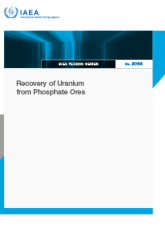Description
Fatigue is a major element in time limited ageing analysis for long term operation of nuclear power plants (NPPs). It is important to understand how cracks occur and grow as a result of fatigue, and then assess fatigue failure. In the design and operating phase of NPPs, it is essential to consider the concurrent loadings associated with the design transients, thermal stratification, seismically induced stress cycles, and all relevant loads due to the various operational modes. After repeated cyclic loading, crack initiation can occur at the most highly affected locations if sufficient localized micro-structural damage has accumulated. This publication provides practical guidelines on how to identify and manage fatigue issues in NPPs. It explains the mechanism of fatigue, identifies which elements are the major contributors, and details how fatigue can be minimized in the design phase for new NPPs.
More Information on reusing IAEA copyright material.
Keywords
IAEA Nuclear Energy, Fatigue Assessment, Light Water Reactor, Long Term Operation, Good Practices, Lessons Learned, Light Water Reactors, Nuclear Power Plants, NPPs, Evaluation, Nuclear Reactors, Safety Measures, Practical Guidelines, Design Phase, Design Considerations, Major Contributors, Methodology, NPP Design, Construction of NPP, Components for Pressure, Retaining Components, Piping, International Codes, National Codes, American Society of Mechanical Engineers, ASME, Boiler and Pressure Vessel Code, BPVC, Operating Experience, Fatigue and Damage Mechanisms, Country Experience, Fatigue Failure, Root Causes, Environmentally Assisted Fatigue, Environmental Effects, Fatigue Crack Growth, Experimental Results, Fatigue Monitoring, Commercial Fatigue Monitoring System, Plant Cycle Counting, Strategies, Technologies, Monitoring Locations, Aging Management, Loading Conditions
Related publications

2025

2025

2025

2025

2025

2025

2025

2025

2025

2025

2025

2025

2025

2025

2025

2025

2025

2025





















